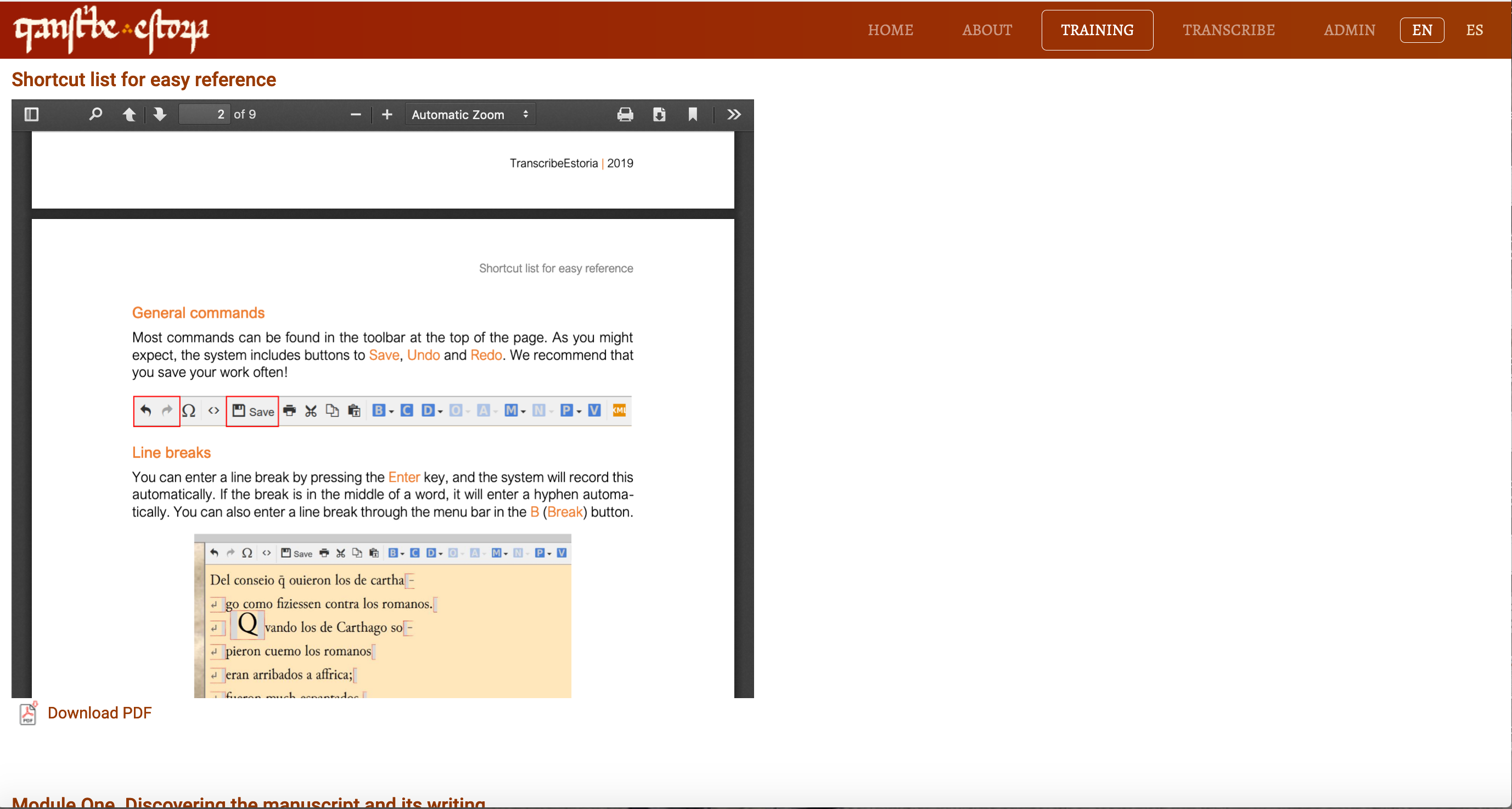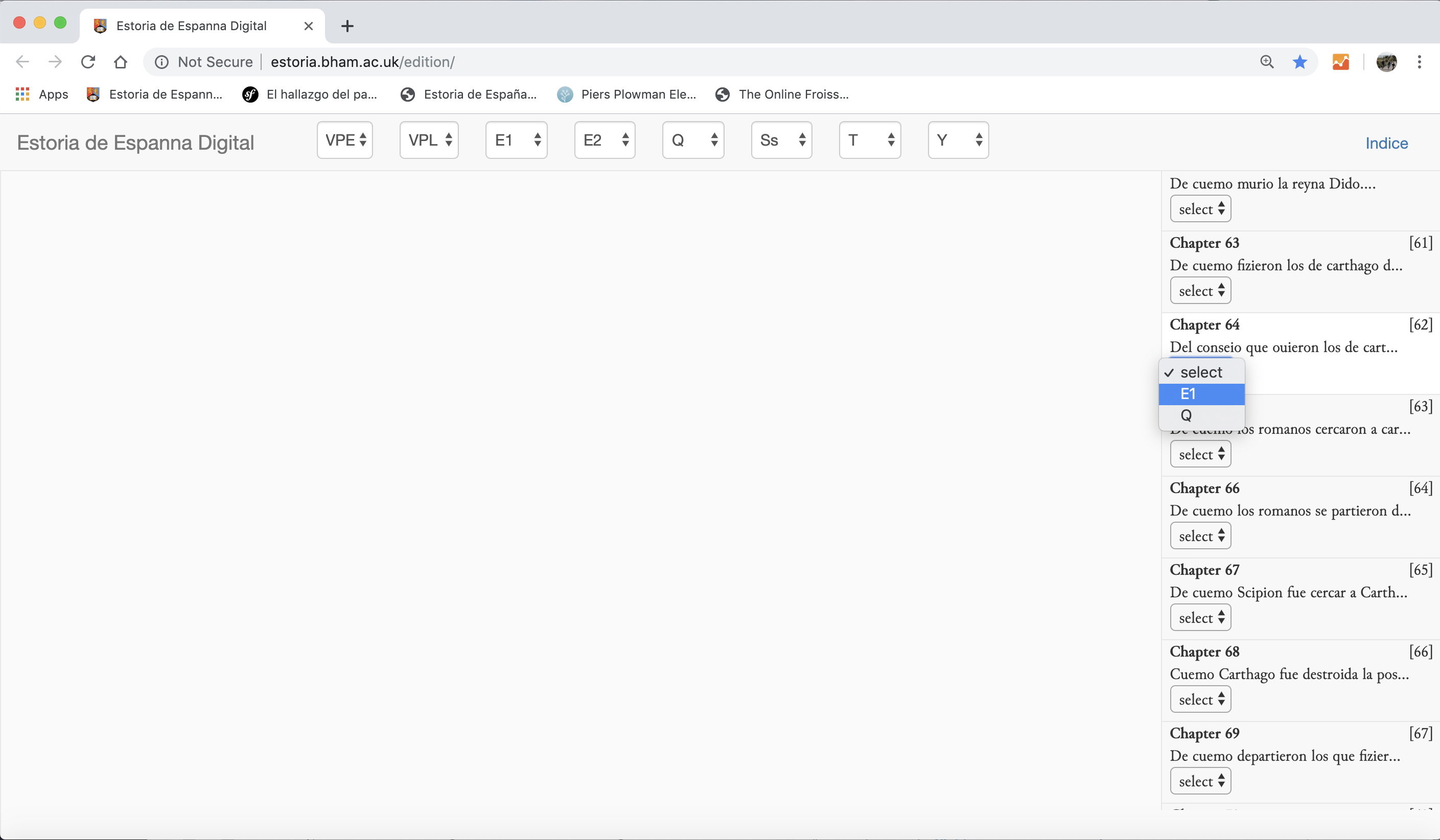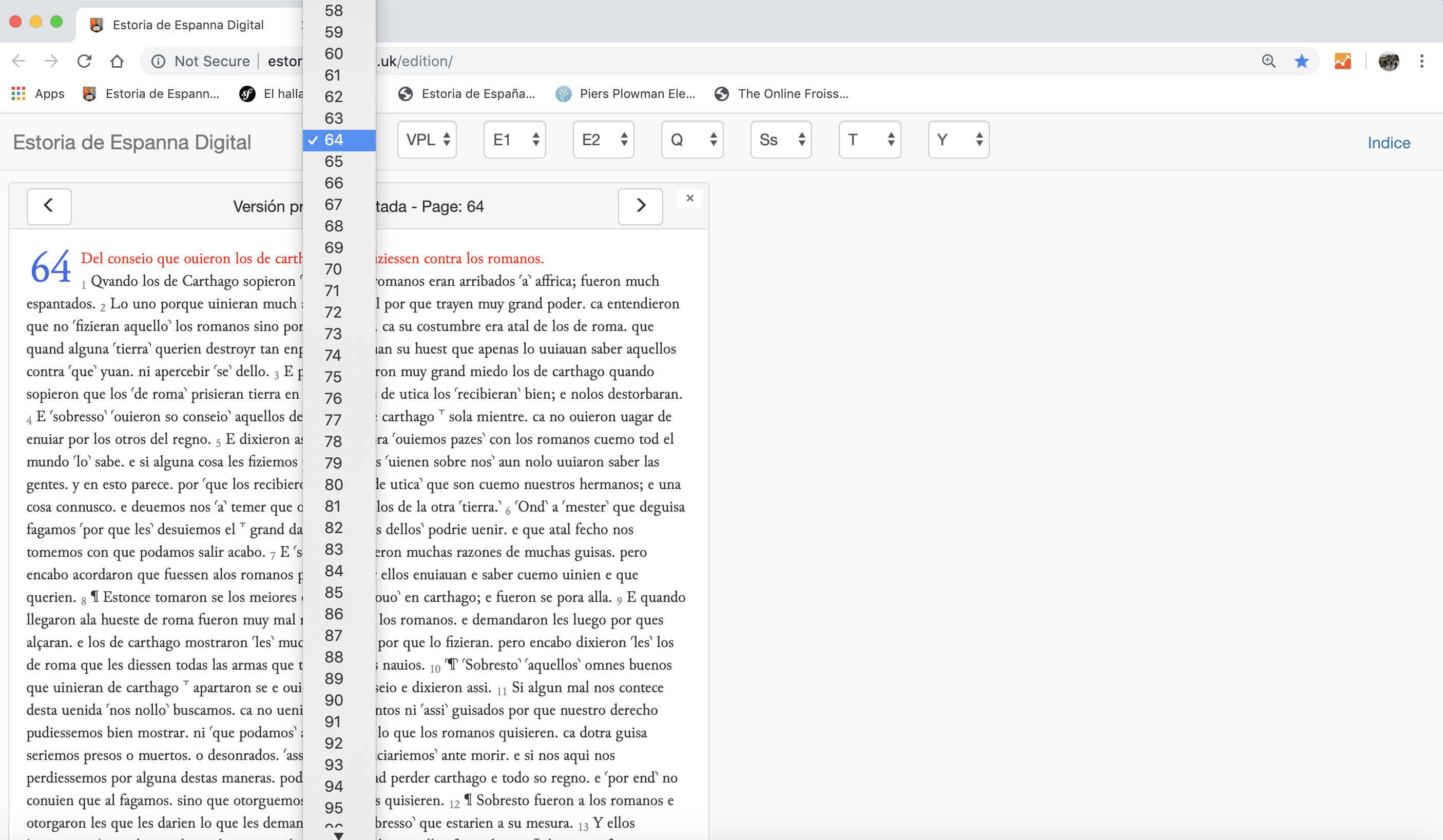We hope you are finding your way around our transcription system well. Remember that in addition to the videos, you can see (and download) a pdf from the beginning of the Training page which gives you all of the information you need to use the transcription desk:

While you are practicing on this passage, you may be interested to know a little bit about it. It is from chapter 64 of the Estoria de Espanna (chapter 62 in the edition of the Primera crónica general by Ramón Menéndez Pidal) and deals with the Punic Wars, between Rome and Carthage.
If you would like to see this chapter in full, you can find it on the Estoria de Espanna Digital edition:

There is a menu on the right hand side of the page, which you can open and drop down to chapter 64. You can choose between the two manuscripts that have the text at this point, E1 (Alfonso’s own manuscript) and Q.
Alternatively, you can use the drop-down menu VPE (Versión primitiva editada), and this will take you to the text of the chapter with footnotes for variant readings.

But you can also choose to read it in a regularised verion, using the VPL (Versión primitiva del lector) drop down menu (you might find this one easier to read):

You might have noticed that this passage, from the beginning of the Estoria, contains not a single reference to Spain. So you might wonder quite what it is doing here. It recounts the beginning of the end of the Third Punic War, when Carthage was finally destroyed at the hands of Scipio Aemilianus in 146 BCE. The same Scipio would subsequently be responsible for the destruction of Numantia – better known now as the subject of a play by Cervantes.
However, the general outlook -the idea that the Punic Wars could be seen as part of the history of Spain, might give you some clues as to how Alfonso conceived of the past.
Don’t worry if your Spanish is not up to following the text – we’ll provide translations into English of the 5 passages we will be looking at together.
